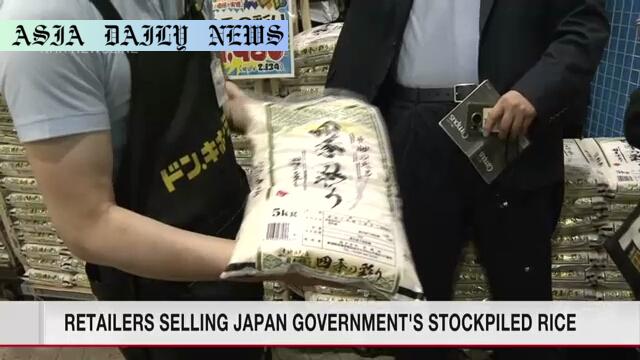Stockpiled rice reaches consumers as the Japanese government releases 300,000 tons, aiming to stabilize the soaring rice prices.

Introduction: Addressing Rising Rice Prices in Japan
Japan is making a notable intervention into its domestic rice market by releasing its stockpiled reserves directly into retail outlets. This decision comes amidst rising rice prices, which have significantly impacted household spending. The government, aiming to counter inflation in staple food items, is taking proactive measures by offering stockpiles harvested in 2021 and 2022 to small retailers and consumers alike. Approximately 300,000 tons of rice are being distributed to mitigate the crisis, marking a critical move in Japan’s agricultural and economic policy.
The Scope of the Release: 300,000 Tons for Relief
The government’s initiative involves selling off large quantities of its rice reserves via no-bid contracts. This includes an initial 80,000 tons harvested in 2021. Retailers have already shown significant interest, with a reported intake of 1,300 applications in a short period. Such overwhelming demand led the agriculture ministry to temporarily pause application submissions, ensuring equitable distribution of stockpiles to smaller and mid-sized sellers. While the scope focuses on immediate consumer relief, it also highlights a broader economic agenda to stabilize market dynamics and prevent exploitative practices within the food supply chain.
Affordability for Everyday Consumers
A key aspect of this initiative lies in pricing accessibility. At retail stores, 5-kilogram bags of rice priced at approximately 2,000 yen (around $14) have emerged as a more economical option for households struggling with elevated food costs. This calculated pricing encourages increased consumer interest and brings the nation’s staple food product back within reach for many who had been priced out due to steep costs. Notably, it also sets a precedent for how government intervention can tangibly benefit everyday lives during periods of economic uncertainty.
Impact on National Economy and Agriculture
The release of these stockpiles is more than a temporary solution; it serves as a strategic effort to regulate the agricultural economy. By directly contracting with retailers, the government reduces overheads, prevents price gouging, and ensures that benefits trickle down to end-users. Additionally, releasing older reserves helps make room for new farming yields, ensuring better crop management and reducing wastage. In the long term, these actions could positively influence Japan’s agricultural landscape by promoting sustainable practices while keeping prices in check.
Consumer and Retailer Response
Supermarket visits have surged, as consumers look to benefit from this opportunity to purchase government-released rice at competitive rates. The initiative has particularly helped small and mid-sized retailers who may have otherwise struggled to maintain inventory amidst price volatility. While this effort temporarily halts arbitrary hikes in rice prices, its reception proves the potential for future government-backed programs aimed at bridging gaps between supply, affordability, and demand.
Conclusion
Japan’s release of 300,000 tons of stockpiled rice is a well-timed and thoughtfully executed measure addressing the intricate dynamics of supply, demand, and affordability. By prioritizing consumer needs and making staple food items accessible again, the government demonstrates its commitment to economic stabilization during challenging times. While the results are still unfolding, the initiative is a promising blueprint for how nations can restore balance in critical sectors through strategic regulatory actions.
Commentary
The Significance of Stockpiled Rice Release
The Japanese government’s decision to release stockpiled rice underscores the importance of timely policy intervention in managing essential goods. Staple food items like rice form the backbone of household spending, and any fluctuation in their pricing disproportionately affects average families. By stepping in to curb soaring prices, the government has shown a proactive approach to inflation management, a move that should be commended for its foresight and immediacy.
Strategic Application for Long-Term Benefits
While this program is designed as a temporary relief measure, its ramifications stretch far beyond the immediate present. The equitable distribution among small and mid-sized retailers ensures that the benefits flow to multiple levels of the economy. Moreover, such interventions can lead to better crop rotation and storage practices, paving the way for more efficient agricultural policies. By addressing both supply bottlenecks and consumer affordability, the initiative demonstrates a comprehensive approach to economic problem-solving.
Broader Implications and Future Outlook
Japan’s rice market situation mirrors broader global trends where staple food items are vulnerable to economic uncertainties. The timely release of stockpiles can serve as a model for other nations grappling with similar crises. Governments worldwide could benefit from taking calculated, demand-focused actions to diffuse inflation pressure on essential commodities. As the initiative unfolds, it will be crucial to monitor whether it achieves desired price stabilization or whether complementary steps may be needed to address deeper systemic concerns. Either way, this program conveys a strong message of the government’s role in protecting citizens amidst volatile economic shifts.


